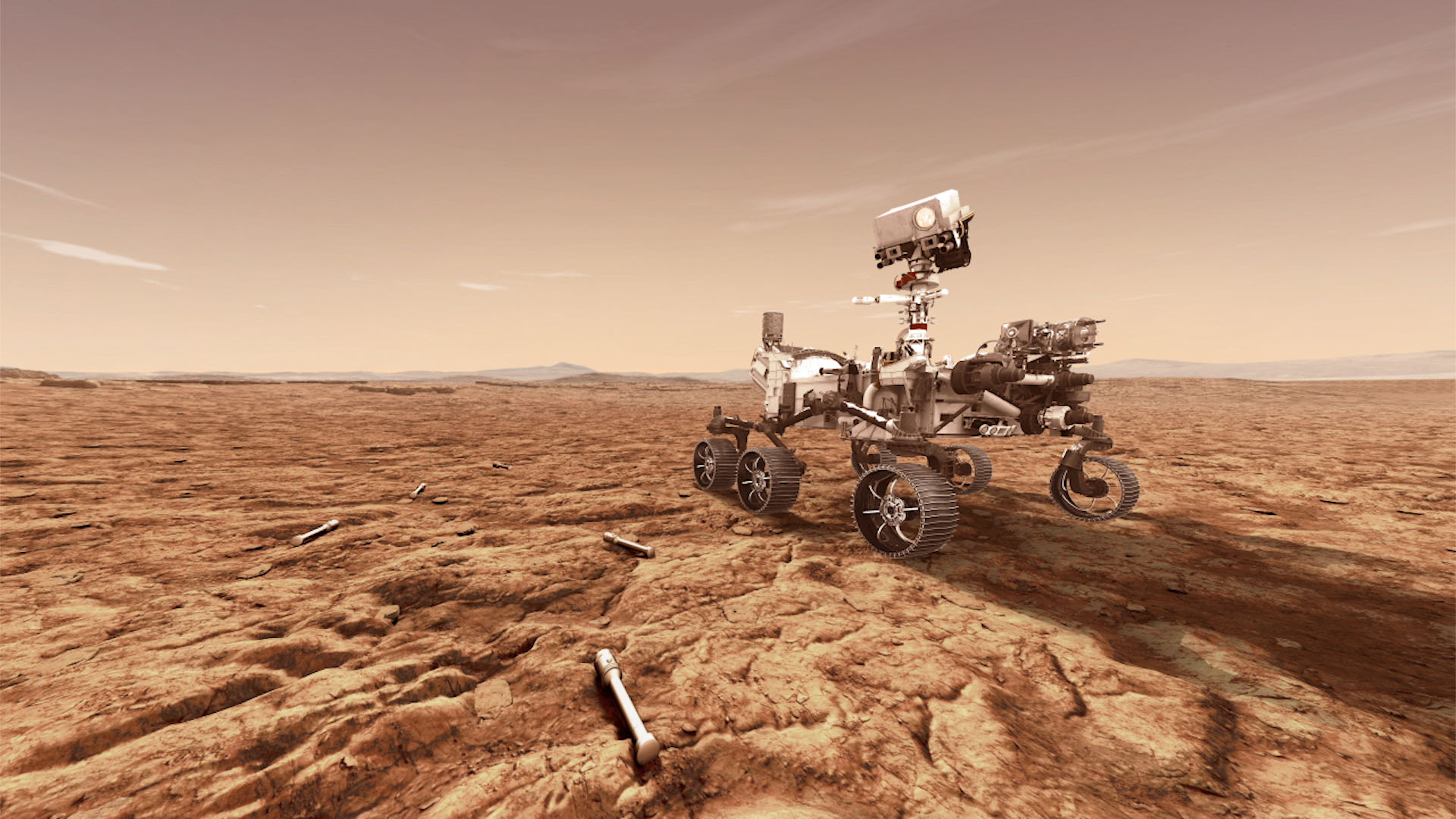NASA creates Mars sample-return independent review board

With the NASA Perseverance rover on its way to the Red Planet, NASA is getting ready for the next major step in Mars exploration — a sample return mission.
NASA recently established a Mars Sample Return Program Independent Review Board to evaluate how to safely bring Martian rocks and materials back to Earth, the agency said in a statement Friday (Aug. 14).
The statement comes in the wake of the Perseverance rover launch to Mars last month to pick up and cache rock samples that could show signs of past Martian life. The nuclear-powered rover will land on Feb. 18, 2021.
Related: NASA's Perseverance rover to return Martian meteorites to Mars
A sample-return mission is considered the gold standard for Mars exploration, because it will allow sophisticated laboratories on Earth to evaluate samples a robotic spacecraft picks up. Rovers and landers can only carry so many instruments to Mars. If we can instead bring pieces of the planet back to Earth, it could accelerate the search for Martian life and assist our understanding of how rocky planets like Earth and Mars formed.
Executing the mission, however, will require a set of sophisticated technologies to safely keep the samples sealed, from when the spacecraft comes through our atmosphere to when the samples are brought to high-security laboratories for examination. But the sample-return mission, which is expected to start later this decade, is one of NASA's keystones as it prepares to send humans to the moon by 2024 and to Mars perhaps as early as 2035.
"Mars sample return is a very high priority for the scientific community," Thomas Zurbuchen, NASA's associate administrator for science, said in the NASA statement. "It's a highly complex international mission which requires focus to achieve technical, programmatic and mission success, and we want to have all the expertise available to us at this early stage to maximize mission success."
Breaking space news, the latest updates on rocket launches, skywatching events and more!
Related: A Mars sample-return mission is coming. Scientists want the public to know what to expect.
Bringing the sample back to Earth will involve multiple steps, in partnership with the European Space Agency and several industrial partners. Perseverance will cache the most promising samples it finds for a future pickup. The later sample-return mission would deliver a "fetch rover" to the cache sites, which would deliver the samples to an ascent vehicle that would bring the samples to Martian orbit. This vehicle would be the first one to ever lift off from the surface of Mars for a space mission; while NASA is sending the Ingenuity helicopter to Mars for test flights, the helicopter is only designed to fly in the planet's atmosphere.
The ascent vehicle will meet up with an orbiter to transfer the samples. The orbiting spacecraft would then carry the sample back to Earth in a "high secure containment capsule," NASA said. The mission could land on Earth as early as 2031, but that depends on funding for NASA and agency priorities, among other things.
"The returned samples could potentially provide astrobiological evidence needed to determine if life has ever existed on Mars," NASA said in the statement. "The mission itself also advances technologies for human exploration of the Red Planet, including the first launch from the surface of another planet. Strict protocols on forward and backward harmful contamination are being developed for the samples' return."
The independent advisory board will include experts from fields such as planetary protection. The board will meet periodically for eight weeks starting in late August, before producing a final report to be delivered to NASA within a few weeks of the board's meetings.
Follow Elizabeth Howell on Twitter @howellspace. Follow us on Twitter @Spacedotcom and on Facebook.
Join our Space Forums to keep talking space on the latest missions, night sky and more! And if you have a news tip, correction or comment, let us know at: community@space.com.

Elizabeth Howell (she/her), Ph.D., was a staff writer in the spaceflight channel between 2022 and 2024 specializing in Canadian space news. She was contributing writer for Space.com for 10 years from 2012 to 2024. Elizabeth's reporting includes multiple exclusives with the White House, leading world coverage about a lost-and-found space tomato on the International Space Station, witnessing five human spaceflight launches on two continents, flying parabolic, working inside a spacesuit, and participating in a simulated Mars mission. Her latest book, "Why Am I Taller?" (ECW Press, 2022) is co-written with astronaut Dave Williams.
-
JPL-ACE Seems kind of redundant to send a rover to pick things up and then need another rover to take them to the return ship. Why not just use the existing rover to go to the landing spot. It would also allow knowledge of the landing site to make it more safe and precise.Reply -
Abe53 Wake up, NASA!Reply
JPL-ACE asked a valid question which I also wondered about, yet you have no response?
1, Why is a a risky secondary fetch rover needed?
2. Why could the Mars 2020/Perseverance rover not just trundle up to the Mars Ascent Vehicle and hand over the samples?
3, Also, why risk sending the sample container unchaperoned into Mars orbit? Connected to an ascent vehicle with presumably some communication ability might make it easier found?
4. And please explain why to take the insane risk of tumbling samples back to Earth without a parachute?
5. Why not deliver it to the insanely expensive ISS long in orbit which has a Canadarm and regular exchange of humans and cargo to Earth?
6. Why not, better yet, just ask your military to pick up the sample with their very manuevereble X38 mini-space-shuttle?
.
Just asking ;-)
Abe53
.
